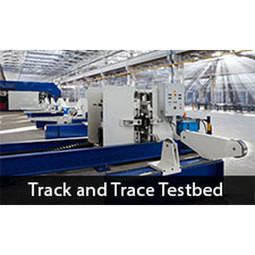下载PDF
How the National Association of REALTORS® Improved Member Services with Hyperledger Fabric
技术
- 应用基础设施与中间件 - 区块链
适用功能
- 商业运营
用例
- 资产生命周期管理
服务
- 数据科学服务
- 系统集成
挑战
全国房地产经纪人协会 (NAR) 是美国最大的行业协会,代表 130 万名参与住宅和商业房地产交易各个方面的会员。会员属于大约 1,200 个地方协会/委员会和 54 个州和地区房地产经纪人协会中的一个或多个。所有这些组织都是独立的,尽管它们共同合作。NAR 正在寻找更好地服务其会员的方法,并认为分析会员的参与度将有助于他们实现这一目标。不幸的是,会员参与活动仅对活动举办地的协会开放。让 1200 多名 CEO 同意放弃对其数据和流程的控制,转而使用一个通用数据库,这听起来不太可能。
关于客户
全国房地产经纪人协会 (NAR) 是美国最大的行业协会,代表 130 万名参与住宅和商业房地产交易各个方面的会员。会员属于大约 1,200 个地方协会/委员会和 54 个州和地区房地产经纪人协会中的一个或多个。所有这些组织都是独立的,尽管它们共同合作。各个地方和州协会都是独立的公司,根据一百多年历史的道德准则共同开展项目。有一个现有的集中数据库,其中包含会员的账单信息。志愿服务、专业发展和委员会服务等参与信息不共享。
解决方案
NAR 使用 Hyperledger Fabric 构建了 REALTOR® Association Blockchain(昵称 BlockR),这是一种基于区块链的工具,用于记录和共享有关全国房地产经纪人协会成员参与度的信息。Hyperledger Fabric 是一种区块链框架实现,也是 Linux 基金会托管的 Hyperledger 项目之一。Hyperledger Fabric 旨在作为开发具有模块化架构的应用程序或解决方案的基础,允许共识和会员服务等组件即插即用。Hyperledger Fabric 利用容器技术来托管称为“链码”的智能合约,这些合约构成了系统的应用程序逻辑。该团队创建了 REALTOR® Association Blockchain(也称为 BlockR),这是一种基于区块链的工具,用于记录和共享有关全国房地产经纪人协会成员参与度的信息。
运营影响
数量效益
相关案例.

Case Study
IIC - Track and Trace Testbed
Factory systems can detect - within a meter - the location of a tool; Misuse of tools can result in serious accident or injury; The production of many industrial and consumer goods requires exacting work - down to the precise force used to tighten a screw. GOAL Manage smart, hand-held tools in manufacturing, maintenance, and industrial environments

Case Study
Coca-Cola Refreshments, U.S.
Coca-Cola Refreshments owns and manages Coca-Cola branded refrigerators in retail establishments. Legacy systems were used to locate equipment information by logging onto multiple servers which took up to 8 hours to update information on 30-40 units. The company had no overall visibility into equipment status or maintenance history.

Case Study
IIC Asset Efficiency Testbed
A recent study on maturity of Asset Efficiency from Infosys and the Institute for Industrial Management (FIR) at Aachen University revealed that 85 percent of manufacturing companies globally are aware of asset efficiency, but only 15 percent have implemented it at a systematic level. Current challenges include lack of instrumentation of the assets, missing real-time data analytics, lack of context due to missing information from other systems, and lack of a holistic focus with other aspects of efficiency like energy, utilization, operations, and serviceability.GOALTo collect asset information efficiently and accurately in real-time and run analytics to make the right decisions








